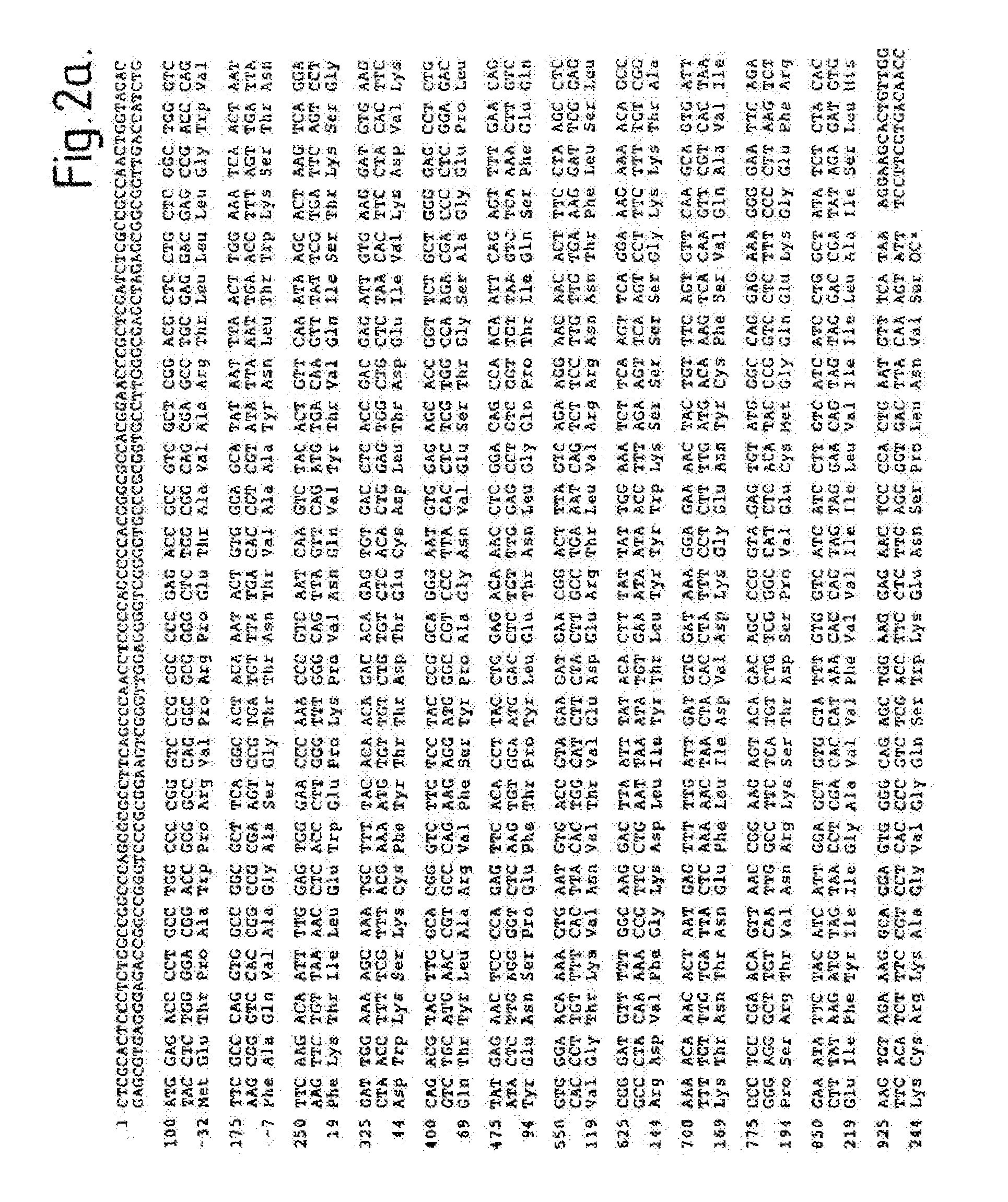Methods and Deoxyribonucleic acid for the preparation of tissue factor protein
a tissue factor and deoxyribonucleic acid technology, applied in the field can solve the problems of ineffective infusion of tissue factor protein, etc., and achieve the effect of difficult identification and sequencing of tissue factor protein dna
- Summary
- Abstract
- Description
- Claims
- Application Information
AI Technical Summary
Benefits of technology
Problems solved by technology
Method used
Image
Examples
example 1
[0081]DNA encoding tissue factor protein may be obtained by chemical synthesis when the complete DNA sequence is known, by screening reverse transcripts of mRNA from liver, or by screening genomic libraries from any cell. Since neither the complete amino acid nor DNA sequence of tissue factor protein were known at the time of this invention, the chemical synthesis of the complete DNA sequence encoding tissue factor protein was not possible.
[0082]A human placental cDNA library was prepared as previously described (Ullrich, A. et al., Nature 309:418–425 [1984]). Double-stranded cDNA was prepared from human adipose RNA using reverse transcriptase in known fashion and, after E. coli RNase H treatment DNA polymerase I was used to synthesize the second strand and then ligated to synthetic oligonucleotides containing restriction sites for SalI, SstI, XhoI and an EcoRI overhanging end, as described previously (Gubler, U. and Hoffman, B. J., Gene 25: 263 [1983]). This DNA was ins...
example 2
DNA Sequence of Tissue Factor Protein cDNA
[0091]The nucleotide sequence of tissue factor protein cDNA is shown in FIG. 2. Of the four adipose clones having an identical EcoRI digestion pattern, one was fully sequenced and corresponded to the sequence shown in FIG. 2. Clone λTF14 contains about 2217 bp of insert, which includes approximately 90 nucleotides of the poly(A) tail (which is not shown in FIG. 2). The cDNA sequence contains 99 bp of 5′ untranslated sequence. The EcoRI digestion pattern of the putative full length clone comprised three fragments of about 900, 750 and 650 bp. A fifth clone appeared to differ in the EcoRI digestion pattern in the fragment at the 5′ end. Two of the adipose clones had an EcoRI digestion pattern indicating they were shorter than the full length clones but yet contained an EcoRI fragment longer than any fragment in the full length clones. This may be due to an EcoRI polymorphism or to the presence of an intron. The longest clone was sequenced to c...
example 3
Expression of Human Tissue Factor Protein
[0096]The full length human tissue factor protein cDNA is contained within the cDNA clone λTF14. The full length cDNA is inserted into an expression plasmid comprising the cytomegalovirus enhancer and promoter, the cytomegalovirus splice donor site and intron, the Ig variable region intron and splice acceptor site, the SV40 polyadenylation and transcription termination site. Construction of the expression vector is undertaken as follows.
[0097]The basic vector referred to as pCIS2.8c26D used here has been described in U.S. patent application Ser. No. 06 / 907,297 which is hereby incorporated by reference. This vector was modified to remove the factor VIII coding sequence by a ClaI-HpaI digest. The region was replaced by a polylinker to allow for additional cloning sites. The sequence of the polylinker used is given below.[0098]5′CGATTCTAGACTCGAGGTCCGCGGCCGCGTT 3′[0099]3′ TAAGATCTGAGCTCCAGGCGCCGGCGCAA 5′
The ClaI and HpaI sites of the original vec...
PUM
 Login to View More
Login to View More Abstract
Description
Claims
Application Information
 Login to View More
Login to View More - R&D
- Intellectual Property
- Life Sciences
- Materials
- Tech Scout
- Unparalleled Data Quality
- Higher Quality Content
- 60% Fewer Hallucinations
Browse by: Latest US Patents, China's latest patents, Technical Efficacy Thesaurus, Application Domain, Technology Topic, Popular Technical Reports.
© 2025 PatSnap. All rights reserved.Legal|Privacy policy|Modern Slavery Act Transparency Statement|Sitemap|About US| Contact US: help@patsnap.com



